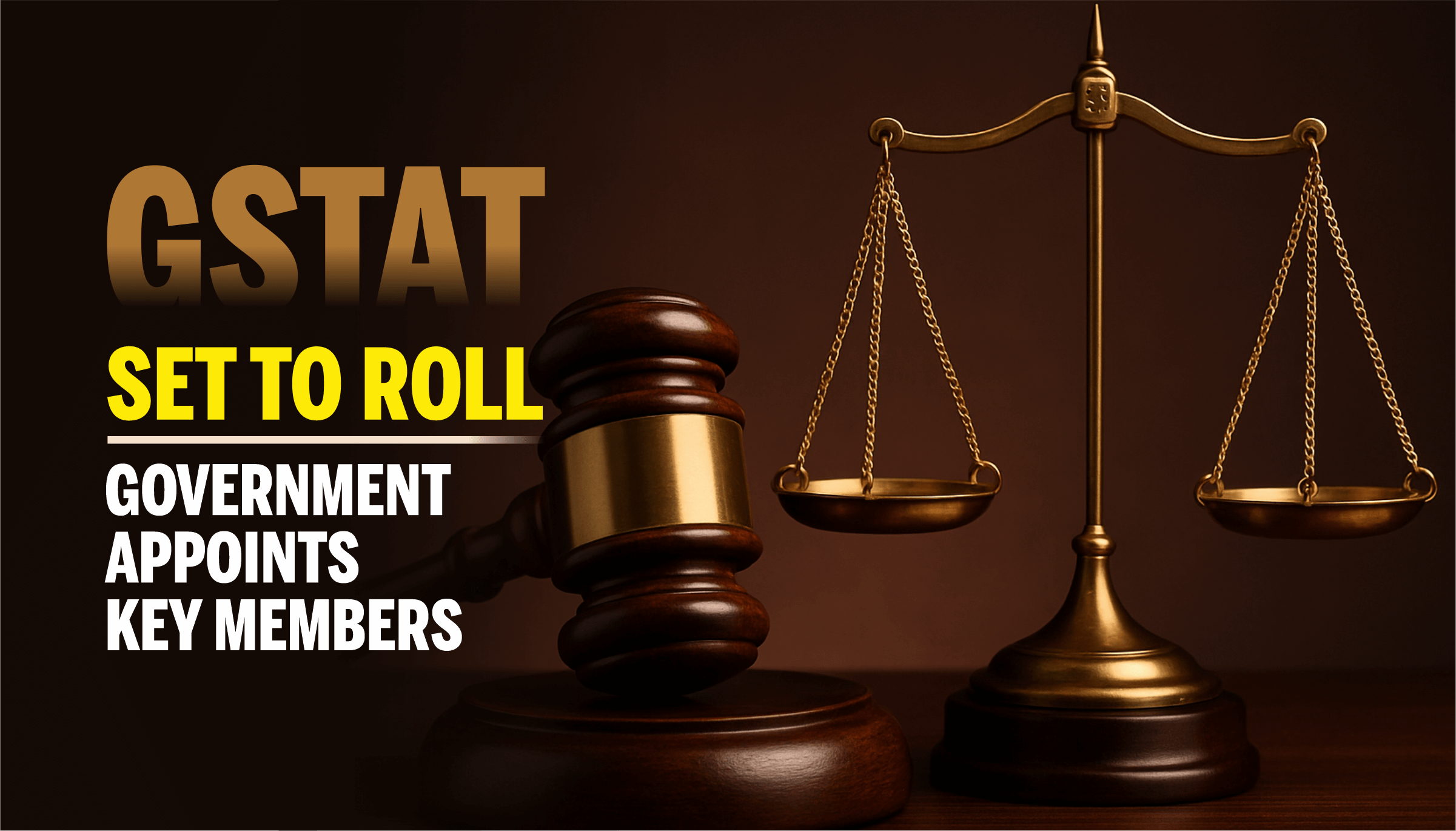GSTAT Set to Roll: Government Appoints Key Members

After years of legal wrangling, policy delays, and stakeholder anticipation, India’s long-awaited Goods and Services Tax Appellate Tribunal (GSTAT) is finally taking shape. On August 4, 2025, the Central Government notified the appointment of 33 Technical Members (Centre) and 53 Judicial Members across various State Benches, alongside key positions in the Principal Bench in New Delhi. This marks a critical milestone in the operationalisation of GSTAT, a second-tier appellate forum envisaged under the GST regime but long delayed due to legal and administrative hurdles.
At the heart of this development is a broader objective: creating a specialised adjudicatory forum to handle disputes arising under GST laws, reducing the litigation burden on High Courts, and enabling faster disposal of tax matters.
The GSTAT Framework: A Long Time Coming
The Central Goods and Services Tax Act, 2017, laid the foundation for GSTAT under Section 109, with the idea that tax matters should be resolved by a dedicated tribunal comprising domain experts. However, its formation was stalled for years due to constitutional challenges, especially concerning the composition of the benches. The Madras High Court’s judgment in 2019 struck down the original design, wherein benches had a majority of Technical Members, as unconstitutional for undermining judicial independence.
In response, the Government reworked the structure and composition of the Tribunal, based on recommendations by a Group of Ministers (GoM). The revised framework balances judicial and technical representation: each State Bench is to have two Judicial Members and two Technical Members (one each from the Centre and the State), while the Principal Bench in Delhi comprises the President, a Judicial Member, and two Technical Members. Parliament cleared the necessary legislative amendments in March 2023, setting the stage for fresh appointments.
Key Appointments and Bench Composition
The newly notified appointments include prominent names from both administrative and legal circles. For the Principal Bench, the Government has appointed:
-
Justice (Retd.) Sanjaya Kumar Mishra, former Chief Justice of Jharkhand High Court, as President of GSTAT;
-
Justice (Retd.) Mayank Kumar Jain, formerly of the Allahabad High Court, as Judicial Member;
-
A. Venu Prasad (Retd. IAS) and Anil Kumar Gupta (Retd. IRS), as Technical Members representing the State and Centre respectively.
Across State Benches, 33 Technical Members have been appointed from the ranks of retired IRS (Customs & Indirect Taxes) officers, many of whom have held senior positions in CBIC and CESTAT. Names like Sandeep Kumar, who formerly chaired CESTAT, lend weight and experience to the Tribunal.
The 52 Judicial Members include retired High Court judges, District Judges, VAT Tribunal Presidents, and senior advocates. Notable among them are Justice (Retd.) Ajai Kumar Srivastava, Gunvantlal M. Patel, and P. Dinesha, who bring a deep understanding of fiscal law.
Why This Matters: Institutional Relief for the GST Ecosystem
Since the introduction of GST in 2017, the volume of litigation has steadily increased, particularly around issues like input tax credit (ITC), classification disputes, transitional credit, valuation, and anti-profiteering. Without a functional appellate tribunal, taxpayers have had no choice but to directly approach High Courts, leading to significant delays and uneven jurisprudence across states.
GSTAT promises to fill this vacuum. It offers a dedicated forum where domain experts can adjudicate tax disputes in a timely and uniform manner. This not only ensures speedier dispute resolution but also unlocks working capital tied up in contested tax demands, especially critical for sectors like infrastructure, FMCG, and manufacturing.
Moreover, the dual composition of judicial and technical members ensures that decisions are both legally sound and commercially informed, balancing constitutional principles with the nuances of GST administration.
The Road Ahead: State Participation and Operational Readiness
While these appointments are a decisive step forward, GSTAT is still not fully functional. A few states, including Uttar Pradesh, Odisha, Gujarat, and Maharashtra, have yet to finalise nominations for Technical Members (State). These state-level appointments are crucial to constituting complete benches, especially in high-dispute states.
Additionally, infrastructure and administrative readiness, such as setting up Tribunal offices, deploying support staff, and integrating with the GSTN ecosystem, remain a work in progress. The expectation is that the first hearings may commence by late 2025, provided remaining appointments and logistical arrangements fall into place.
A Welcome Evolution in GST Jurisprudence
The operationalisation of GSTAT marks a watershed moment in India’s indirect tax landscape. For businesses and tax professionals, it offers a specialised, structured, and time-bound redressal mechanism that has been long overdue. For the judiciary, it alleviates pressure by routing tax litigation to a dedicated channel. And for policymakers, it is an opportunity to promote trust and compliance through institutional stability.
As GSTAT begins its innings, stakeholders would be well advised to gear up by reviewing pending litigations, reassessing strategy, and preparing documentation to take full advantage of this institutional reset.
